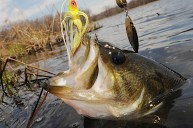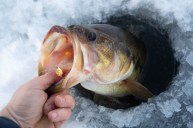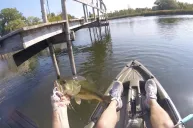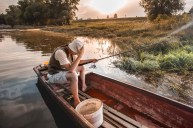Many bass fishermen hit it hard each spring, and hang their rods and reels up before the fall bite heats up.
For those bass fishermen who wish to continue the chase into the latter half of the year, several factors play a massive role in their ability to find consistent success. Perhaps three of the most notable variables that must be considered when chasing after the fall bass bite are changing temperatures, bait migration, and changing water levels.
Changing Conditions Require Bass Fishermen To Adjust Their Approach Each Fall
Temperature Change
At Wired2Fish, it is said that the temperature change is likely the first change that is considered by anglers. As temperatures cool from summer highs, fish will begin to move into shallow water. With bass spreading away from their deep water-holding areas in which they lived through the summer, consistently catching fish in deeper water becomes increasingly difficult. Bass fishermen should consider using shallow water tactics to pursue bass, which are beginning to cruise for bait fish in the shallows.
Moreover, as temperatures warm, baitfish themselves will move out of deeper waters and rise toward the surface, where they will float. The result? Bass will congregate at mouth creeks and toward the backs of pockets, anticipating the arrival of floating baitfish.
Bait Migration
As was hit on a bit with temperature changes, the fall migration of baitfish is massively important to understand. In summer months, baitfish often reside in 20 to 40 feet of water, where applicable. As fall rolls around, baitfish rise higher in the water column. Namely, the backs of creeks often prove extremely productive each fall, as baitfish will congregate there. Likewise, pinch points and channel swings are notorious for holding baitfish in the fall.
Always remember that despite the changing conditions, one rule holds true - where the baitfish are, the bass will go.
Water Levels
As the fall wears on, lakes will also have their water levels drop to what is called their "winter pool." Such is a result of what is called "lake drawdown." As the water levels drop, plenty of shallow water structure and cover becomes un-fishable. While such can certainly difficult to navigate, fish will always find a new place to live. Often, channel swings and other deeper water pockets become more productive. With fewer places for bass to hide, these pockets of deeper water that survive the lake drawdown can be exceptional.




